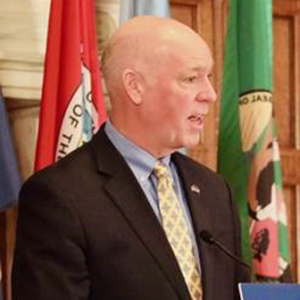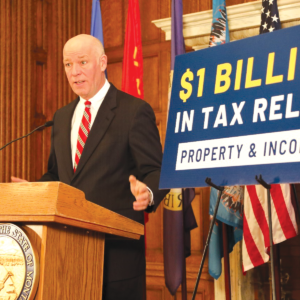Business relocations projected to create 900 new Montana jobs
Fifteen relocating or expanding businesses will create 900 new Montana jobs, reported Gov. Greg Gianforte in his State of the State address.
In his State of the State address, Governor Greg Gianforte announced the relocation or expansion of 15 businesses to Montana that project to create 900 new Montana jobs.
“As we lead the Montana comeback, we’re creating an environment where businesses can thrive, create more good-paying jobs, and increase opportunities for all Montanans,” Gov. Gianforte said. “There’s no doubt about it: Montana is open for business.”
“We’ve made Montana more attractive to innovative job creators, and they’re investing in our state and our people,” he said.
Since the governor took office, 15 businesses from a variety of sectors announced a relocation or expansion to Montana.
They include Hyundai Motor Group, NextEra Energy Resources, and Tonix Pharmaceuticals, which project to create nearly 500 jobs combined.
The 360 Electrician, which coaches over 250 electrical contractors nationwide, relocated from California to Florence, Montana.
“We chose Montana, and plan to grow here,” said Jeff Guldalian, CEO of The 360 Electrician. “Montana is the triple threat. You have a friendly business climate, can be successful, and can enjoy that success here, too. The Montana difference makes doing business so much better.”
Avanti Helium, which focuses on the exploration, development, and production of helium, has expanded its operations from Canada to Shelby, Montana.
“We’ve found Montana’s business climate to be excellent,” said Chris Bakker, CEO of Avanti Helium. “The communities have been welcoming and the interactions with various governmental bodies has been reasonable, fair, and efficient. The Treasure State will be central to our future investment plans.”
Businesses relocating to or expanding to Montana since January 2021 include:
The 360 Electrician, Inc., a commercial and residential electrical contracting firm which also operates an online community helping electricians around the country adopt best practices, relocated from California to Florence and projects to create 10 Montana jobs.
Amazon engages in the retail sale of consumer products and subscriptions through online and physical stores in North America and internationally. Amazon announced its first Montana dispatch and delivery facility in December 2022. With the new facility in Missoula, Amazon projects to create 140 Montana jobs.
Avanti Helium in the Flathead is focused on the development and production of helium across western Canada and the United States. Avanti projects to create more than 20 Montana jobs.
Berkshire Hathaway Energy provides energy to more than 12 million customers and end-users through the United States, Great Britain and Alberta, Canada. The company will leverage Montana’s wind power from NaturEner. It expanded its operation to Judith Gap and projects to create 20 Montana jobs.
Fair Isaac Corporation (FICO) relocated its corporate headquarters to Bozeman. The leading analytics software company, which helps businesses in more than 90 countries, expects to create more than 10 Montana jobs.
GlassyBaby, a manufacturer of high-quality handblown candles and glassware, expanded its operation from Washington State to Livingston, Montana. GlassyBaby could employ as many as 140 Montana workers.
Hyundai Motor, a global automotive manufacturer, announced its new research and development center in Bozeman in May 2022. Hyundai is investing an estimated $20 million in the new headquarters and anticipates creating more than 50 Montana jobs.
INDUSTRY provides customizable workspaces for long-term tenants. The company expanded its operation from Colorado to Bozeman and projects to create 10 Montana jobs.
Melcher Manufacturing, which manufactures high quality composite ramps for the moving and trucking industries, relocated from Washington State to Helena, and expects to create seven Montana jobs.
NextEra Energy Resources, LLC, delivering clean energy across much of North America, expanded its operation from Texas to Rosebud, Custer, and Carter counties. The company expects to create 300 Montana jobs.
Snowflake, Inc., a global cloud data analytics vendor, relocated from California to Bozeman, and is expected to create 20 Montana jobs.
Sostena Corp. provides agri-tech solutions, offering customers, including family farmers, tech solutions needed to help growers maximize their efficiency while reducing costs. Sostena located to Missoula, and expects to create 40 Montana jobs.
Sustainable Oils, Inc., the world’s leading developer of camelina, moved its North American headquarters from California to Great Falls in 2022, and it projects to create 15 Montana jobs.
Tonix Pharmaceuticals will support Phase 3 and commercial scale manufacturing of live-virus vaccines. Tonix expanded its operation to Hamilton, and projects to create 120 Montana jobs.
Vista Outdoor designs, manufactures and markets consumer products in the outdoor sports and recreation markets in the United States and internationally. Vista expanded its operation from Minnesota to Bozeman, will locate one of its headquarters in Bozeman, and anticipates creating 25 Montana jobs.




